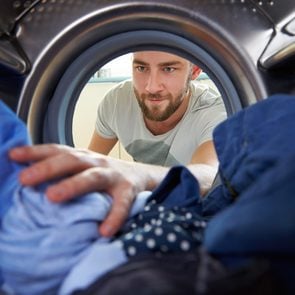Fast Fashion Could Be Making You Sick—Here’s How
According to Miriam Diamond, environmental scientist at the University of Toronto, toxic chemicals in mass-produced clothing could have long-term effects on our health.

Reader’s Digest Canada: Should I be worried about toxic clothing?
Miriam Diamond: Yes. [In 2021] I worked with CBC Marketplace to look for toxins in a collection of cheap and mass-produced clothing, often known as fast fashion. We tested everything from bathing suits to bags to children’s clothing. I was already aware that clothing today contains more synthetic chemicals than it used to, but the results were scary: we found elevated levels of chemicals in one in four items tested.
Why is this stuff in our clothes at all?
After the Second World War, there was a big shift to the convenience of wash-and-wear. If you look at what makes clothing wrinkle-free and stain-resistant, that’s all chemicals. And many dyes today are made with potentially dangerous chemicals because it’s cheaper. Culturally, it used to be that people had their Sunday best and their work clothes, but today the appetite for new outfits is out of control. A company like Zara produces 10,000 new items a year, which has always been considered fast fashion, but now there are online retailers that produce 6,000 new items a day. It’s a trade-off. That top cost $15 and you don’t have to iron it, but you may be absorbing very dangerous substances into your body.
What are the specific health risks of toxic clothing?
Quite a few of the items we tested contained per- and polyfluoroalkyl substances (PFAS), which are known as forever chemicals because they don’t break down and they stay in our systems. You’re not going to wear a garment and feel sick later that day. This is about long-term exposure, and the harmful effects can include cancer, type 1 diabetes, impaired immune function and increased obesity. We also found phthalates, which interfere with hormones and male reproductive systems, and lead, which can be particularly harmful to children and fetuses. Just as an example, we tested a raincoat that contained more than 20 times the amount of lead allowed in children’s products according to the Canada Consumer Product Safety Act.

If companies’ products exceed the limits, how are they able to sell them?
You just can’t inspect every piece of clothing, and that is especially true with the rise of global online retailers shipping from a factory on the other side of the world to your doorstep.
Can these chemicals be washed off in a washing machine?
Although they’re not designed to come out that way, some do. But of course, when we put these items in our washing machines, the fibres are released and end up in our drinking water. So even if you can avoid wearing contaminated clothing—which is a lot of responsibility to put on consumers—you are still going to be exposed through drinking water.
Is toxic clothing only a fast-fashion problem?
Certainly fast fashion is responsible for the massive volumes of products, but in terms of whether only cheaply made clothing contains chemicals, we don’t actually know. It’s possible that garments that advertise organic or natural fibres are less likely to contain chemicals, but there have been examples of these claims being false. The problem is that the textile industry is so unregulated. Pharmaceuticals and cosmetics require labelling, but that is not the case with clothing.
How can we buy safe clothing?
You can look for companies that are taking positive steps—for instance, Keen footwear has gone PFAS-free, and Patagonia is taking steps to do the same. But also, the European Union recently announced a plan to hold fashion retailers accountable for toxins in their clothing. It would be great to see the Canadian government follow suit. In the meantime, consumers can hold fast-fashion companies accountable by not buying their products. Change is possible when there is pressure from the public.
Next, follow our healthy home checklist to eliminate potential hazards in every room.






